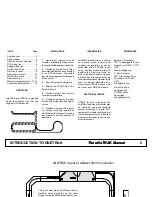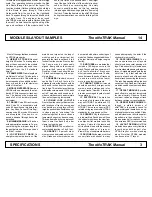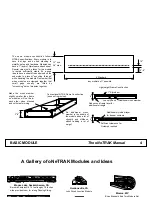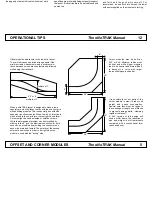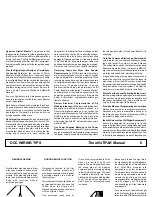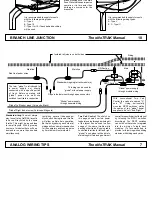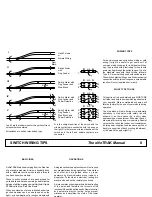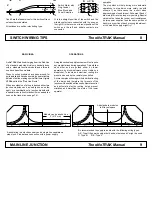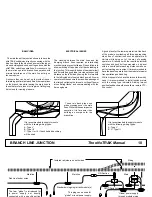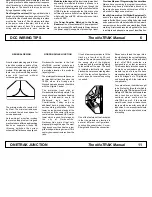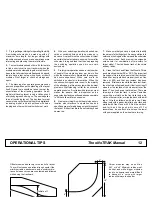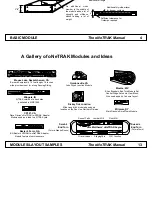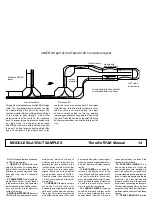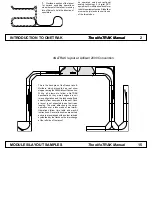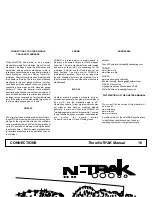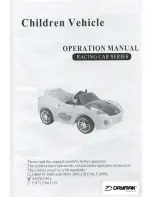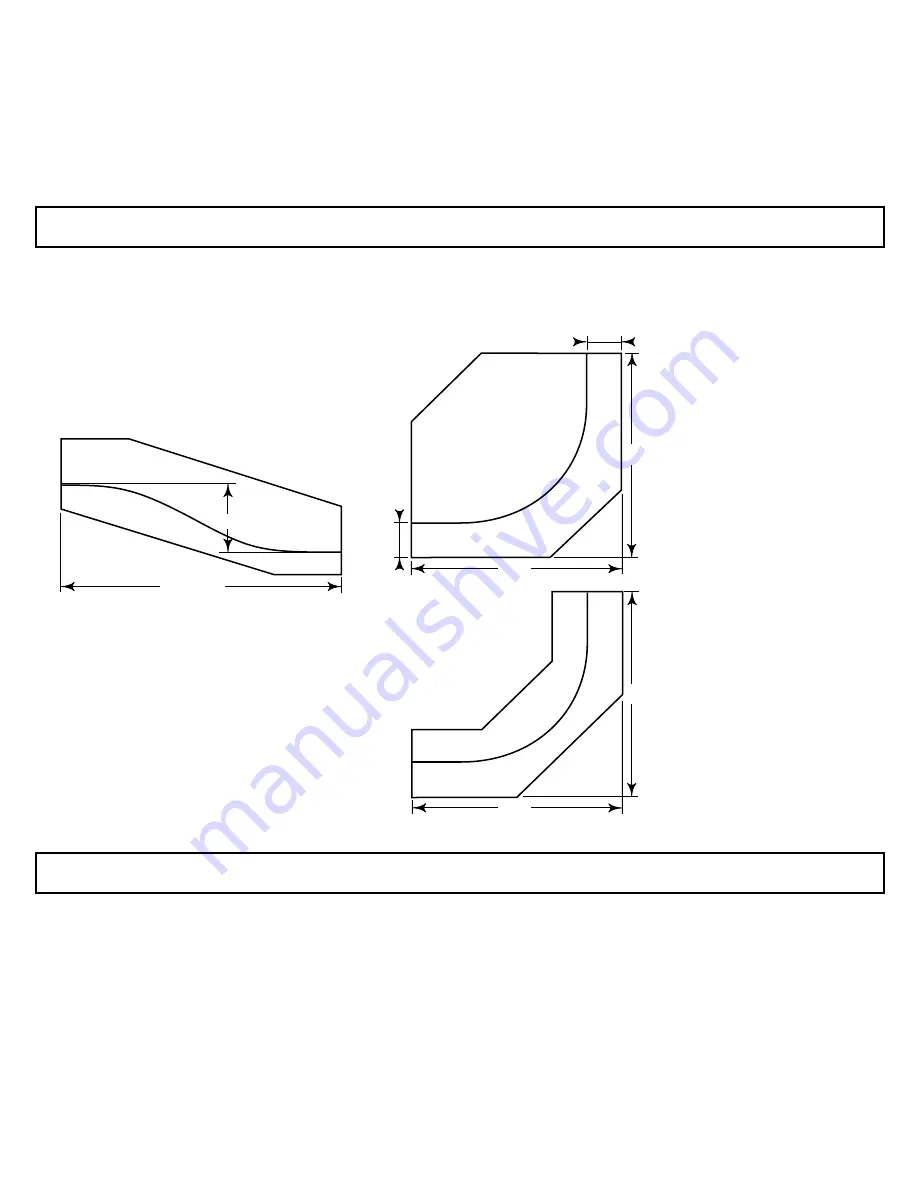
The oNeTRAK Manual
The oNeTRAK Manual
OPERATIONAL TIPS
12
OFFSET AND CORNER MODULES
5
Multiple of 1'
4', 5' or 6'
multiple of 1'
36"
36"
36"
36"
6"
6"
Offset modules add variety to the look of a layout.
They will not cause operational rough spots if the
minimum radius, easements, and a minimum dis-
tance between curves are considered and followed
while doing the trackwork.
When a oNeTRAK layout is designed to close a loop
special care must be taken to stay with the one-foot grid
while building modules. This is especially true with odd
shaped or junction modules. When there's no intention to
close a loop in the near future, there might be one later...
Corners might be used as inside or outside corners.
While the dimensional problem can be simplified by
sticking to the 6" grid, the electrical connection for both
uses can be prepared by providing two connectors on
each side, male and female. The polarity of the second
set must be switched in order to be right when the
module is used with the "wrong" side.
Corner modules may be built as
3'x3' or 4'x4'. Minimum radius must
be kept and while bigger modules
tend to be heavier and more difficult
to transport, a curve with larger
radius will always look better.
It is possible to cut out parts of the
corner module in order to reduce its
weight and space consumption.
Special care then must be taken to
leave enough strength and stiffness
to prevent damage while clamping
together the layout!
A 4'x4' version of this design will
need a stiffer frame, the reduction in
size and weight is still remarkable
compared with a conventional form
(as seen above).
1.
Try to get longer sidings for operating flexibility.
A switching scheme can be made up with a 6'
maximum train length, but longer sidings with
industries spread around make operations more
interesting and planning them more flexible.
2.
Test out modules ahead of time. It's far too late
to find a short circuit in your track work when the
modules are to be clamped together at a Show! To
be sure that all modules work flawlessly it's a good
idea to have a test set up with all new or rebuilt
modules. Don't forget to check all sidings and
spurs.
3.
The planning of an operating scheme needs
as much preparation as the planning of the layout
itself. Special care should be taken to meet the
expectations of the attending operators. An all-
digital or all-analog layout is only a valid option if
everybody agrees on doing so. The same applies
to an all switching layout. The key idea for most
cases is to have the layout split up into a digital and
an analog district, and into portions with trains
looping and others with local switchers at work.
4.
When car switching operation is desired, car
cards or switching lists need to be made up in
advance. A car pool must be collected and it must
be certain that selected cars show up. For smaller
schemes it is a good idea that the one preparing
the switching operation uses his own cars
exclusively.
5.
Prototypical operation needs a vast number
of people! One single engineer per train is fine
when the scheme is very simple and the engineer
has some experience. When cars are to be
switched a conductor is imperative. When the
choosen switching scheme is new to the majority
of the attendees, a three man crew will solve most
problems. Staff planning is vital for a successful
operating session. Five trains with a two man crew
makes ten people. Add a dispatcher and a
superintendent and you will need a dozen operators
to fill the callboard for one session.
6.
Name everything! As with the prototype every
location with relevance to operation needs a
specific name, preferably being unique throughout
the layout. If industries are to be served they need
names too.
7.
Make sure that you have a system to identify
the owner of all rolling stock. An easy solution is to
color code the kingpin of the cars and the underside
of the locomotives. Each member is assigned a
unique color (or combination of two colors for
larger clubs). The club keeps track of the colors
already taken.
8.
Clean the Track and Clean the Wheels. This is
good practice whether DC or DCC. The important
message in this rule is to be sure that the track has
dried from any liquid track cleaner (such as Goo
Gone or 409) and that any residue has been
removed. If trains are run while the track is still wet,
then the train will spread any dirt that is coming off
wheels or the residue of the cleaner all over the
layout. Then you have a real problem. There are
two ways to clean the track - use two Centerline
cars with a wet cloth on the front roller and a dry
cloth on the rear roller, or wipe the track with a wet
rag or Q-tip then follow up with a dry rag. Clean
wheel sets with a paper towel laid on a track and
wetted with Goo Gone or 409. Roll the car back
and forth and the gunk will come off. For
locomotives, do one truck at a time on the towel
with power applied so the wheels are turning.


